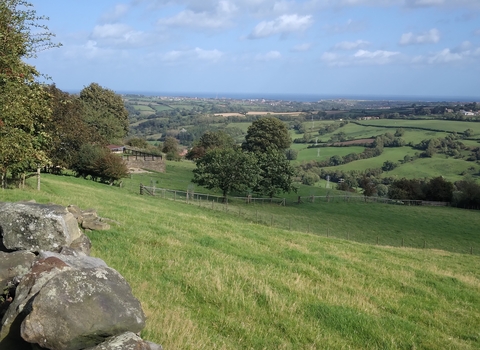Where is the River Esk?
The River Esk flows 28 miles through the North York Moors National Park, originating in Westerdale before flowing to Whitby where it enters the North Sea. The river flows through a variety of landscapes from dramatic moorland, ancient woodland, and gentle rolling farmland. The river is home to an array of wildlife such as Atlantic salmon, sea trout and the critically endangered freshwater pearl mussel.
The BEACH Esk project focuses on the Lower Esk Catchment and its tributaries in the Whitby area.
Our key aims
A three-year landscape scale project, funded by the Environment Agency, and focussed on improving water quality and habitat in the Lower Esk Catchment.
The BEACH (Better Estuary and Coastal Habitats) Esk project will be delivered over two financial years (2021/22 and 2022/23).
The project’s three elements are:
- Estuarine Enhancement: this element, led by Groundwork Northeast and Cumbria, will explore the opportunity to create additional salt marsh habitat in within the Esk estuary, install living seawalls, floating rockpools and fish refugia.
- Catchment diffuse pollution: Led by Yorkshire Wildlife Trust, this element will research and identify pollution sources and pathways within the tributaries, engage with relevant stakeholders and partners, and prioritise locations to focus the delivery of a capital works programme.
- Stakeholder engagement: Yorkshire Wildlife Trust’s Marine Pollution Officer will focus on improving practices within the estuary by engaging with businesses, the local community, and visitors. This element will also develop best practice codes of conduct to ensure consistency in approach and address known issues within Whitby harbour.
How you can help
If you own or manage land adjacent in the Lower Esk Catchment and would like to be involved in the project, contact Christopher Watt at chris.watt@ywt.org.uk for more information.
Our Work
River walkover surveys have been undertaken on all watercourses in the catchment, covering over 100km. These were to build a profile of the river network and identify issues affecting water quality, as well as restoration opportunities. Most of the issues recorded were bankside erosion, trampling of the banks by livestock (poaching), and runoff points from fields and farmyards.
YWT has worked alongside landowners to mitigate these issues and improve the river environment, for example installing fencing to prevent livestock accessing the river or enhancing buffer strips.
The project has delivered:
• Engaged with 12 landowners to deliver capital works.
• 6,457m of riverside fencing.
• 1ha of riparian buffer strips created.
• 0.2 ha of wetland created.
• 1.5ha of species-rich grassland creation.
• 1ha of wood pasture creation.
• 3,343m of hedgerow creation.
• 1440 trees planted.
• 630 hours of volunteer support.
Partners/Funders
Yorkshire Wildlife Trust has been working on the BEACH Esk project in partnership with Groundworks NE & Cumbria and the Environment Agency. Funding has been received from Environment Agency and through the Farming in Protected Landscapes (FiPL) programme which is administered through the North York Moors National Park Authority.






